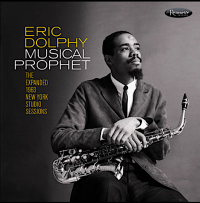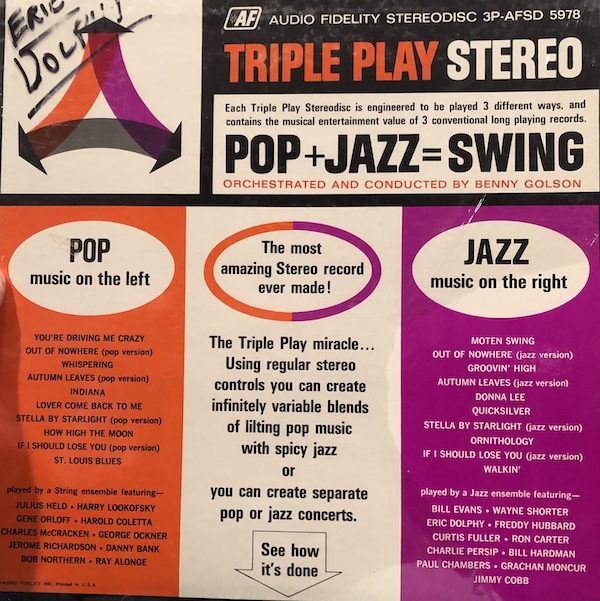But seems like Resonance has found that very intentionally limiting to RSD is a viable business. Presumably the wonderful accompanying booklet will also be found in the upcoming CD release. A friend at the late, great Philadelphia Third St Jazz had included the just released Douglas double among the dozen records intended to start my jazz collection, ironically along with Coltrane's Ole, Dolphy's first recording with Coltrane (though some may be unaware that they're listening to Dolphy on that Atlantic album as he had to be listed under pseudonym of "George Lane" due to his Prestige contract).
Actually probably more appropriate to say it's some "audiophiles" who think Dolphy begins and ends with Out to Lunch; despite a sadly abbreviated recording career, hopefully "jazz enthusiasts" have much greater familiarity with his work given the incredible array of iconic albums Dolphy performs on with a truly diverse range of leaders: Coltrane's Live at Village Vanguard and Africa/Brass, Ornette Coleman's Free Jazz, Oliver Nelson's Blues and Abstract Truth (yeah, audiophiles have that one too I hope), Max Roach's Percussion Bitter Sweet, Abbey Lincoln's Straight Ahead, George Russell's Ezz-thetics, Andrew Hill's Point of Departure, Individualism of Gil Evans, Booker Little's Out Front, MJQ's John Lewis Wonderful World of Jazz, Gunther Schuller's Jazz Abstractions, and a of course several essential Mingus albums, including the 1960 Candid sessions, Impulse Mingus Mingus (etc.) as well as numerous live recordings of the amazing 1964 Mingus band w/Jaki Byard.
(And yes, even Sammy Davis Jr, but not sure I would describe that as "iconic")
Plus, while perhaps not quite as fully realized as OTL, the earlier Dolphy credited Prestige albums are superb, and I think still available as Analogue Productions vinyl releases.










